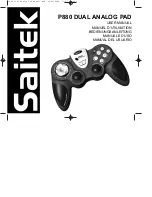
Communication Interface Functional Overview
MPSC and Ethernet SW Implications
Copyright © 2002 Marvell
CONFIDENTIAL
Doc. No. MV-S300165-00, Rev. A
May 21, 2002, Preliminary
Document Classification: Proprietary Information
Page 63
outside the snoop regions defined in the GT-64260A. As a result, the communication unit does not drive any snoop
cycles when it is accessing to memory.
This solution increases software complexity and since the buffer pool is shared among many devices in the soft-
ware, this creates additional complications.
7.4
MPSC and Ethernet SW Implications
The GT-64260A communication interfaces include three Ethernet (two for MII) ports and two MPSCs ports. Each
port implements two SDMA engines, one for transmit and one for receive. After appropriate initialization, the
SDMA is designed to minimize CPU intervention. For code examples, see
Appendix E. "Communication Example
7.4.1 Descriptors Management
The descriptors are the engines of the SDMA that enable packet transfers through the GT-64260A communication
ports. The figure below describes the Rx and Tx descriptors.
Figure 28: SDMA Descriptor Format
3
1
3
0
2
9
2
8
2
7
2
6
2
5
2
4
2
3
2
2
2
1
2
0
1
9
1
8
1
7
1
6
1
5
1
4
1
3
1
2
1
1
1
0 9 8 7 6 5 4 3 2 1 0
Command / Status
Buffer Pointer
Rx Descriptor
+0
+4
+8
Tx Descriptor
= Reserved
Next Descriptor Pointer
Byte Count
Buffer Size
+C
3
1
3
0
2
9
2
8
2
7
2
6
2
5
2
4
2
3
2
2
2
1
2
0
1
9
1
8
1
7
1
6
1
5
1
4
1
3
1
2
1
1
1
0 9 8 7 6 5 4 3 2 1 0
Command / Status
Buffer Pointer
Next Descriptor Pointer
Shadow Byte Count
0
0
0
0
0
0
0
0
Byte Count
0
0
= Any Value in Byte Mode
Offset
0
0
0
0
+0
+4
+8
+C
















































